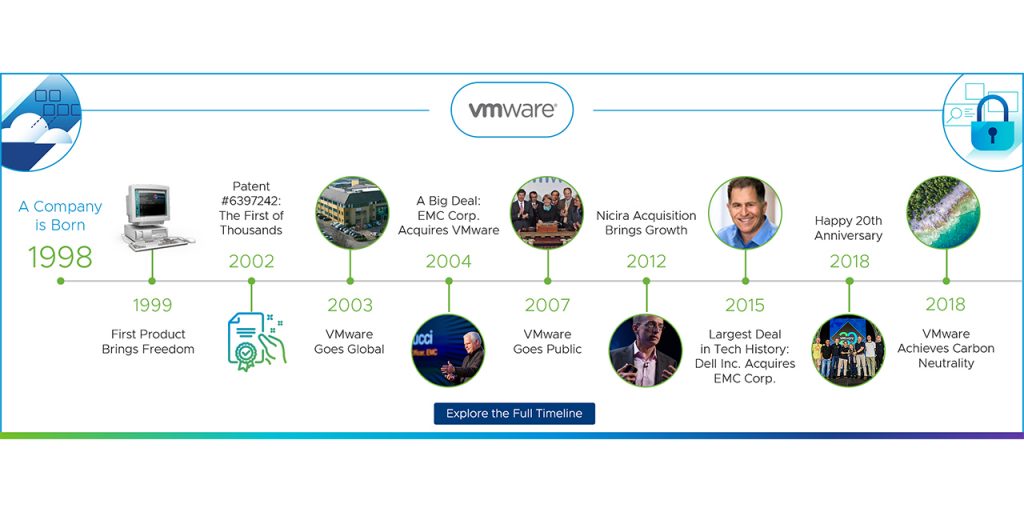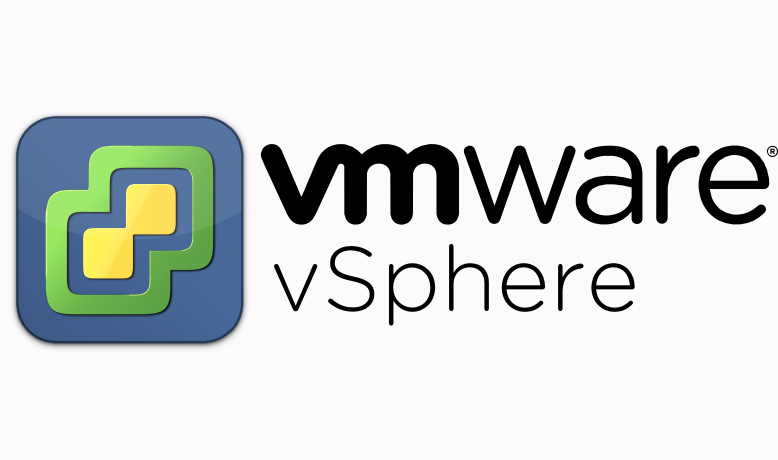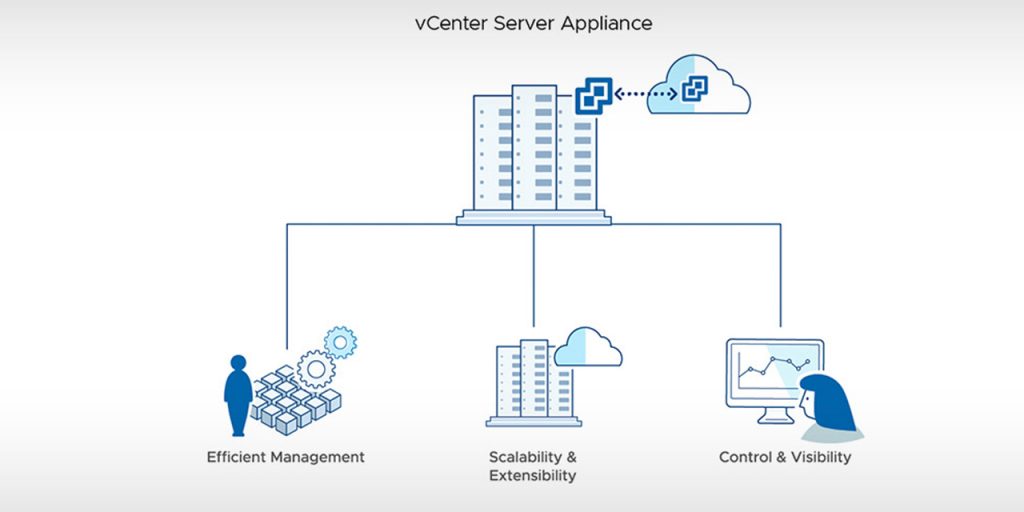The software, called a hypervisor, is installed on physical hardware and acts as a platform for creating virtual machines, dynamically providing them with hardware resources. This article will focus on software products from VMWare, one of the market leaders in virtualization software.
VMWare History

The history of one of the most famous developers of software products for virtualization, American company VMware, started in February 10, 1998 in Palo Alto, California. Five founders – Diane Greene, Mendel Rosenblum, Edward Buñon, Scott Divine and Edward Wang – were at the origins.
One of the most important development areas of VMware Inc. is the development of software products for server virtualization. Today, according to statistics, VMware has more than 75% of the global server virtualization market, which makes the company the undisputed leader in this area, while its direct competitors are far behind.
VMWare vSphere

VMware calls its software product vSphere the “heart” of modern software-defined data centers. In fact, vSphere is the trademark for VMware’s suite of virtualization products and tools.
VMware vSphere is an industrial-grade virtualization platform. Its suite of software components include the ESXi hypervisor and the vCenter Server management solution, among others. Because even with a large number of installed applications, most physical machines remain underutilized, vSphere solves this problem by allowing more efficient resource allocation.
One physical machine can be used to create several independent virtual machines, each running a different operating system. In this way, it is possible to virtualize your entire hardware infrastructure, even if it consists of hundreds of interconnected physical machines and storage devices.
VMWare vCenter Server

VMware vCenter Server is an application for centralized management of VMware vSphere environments and building a virtual cloud infrastructure. The vCenter Server is essentially a dispatcher that is used to monitor virtual machines running on a virtual platform. This tool allows you to monitor all ESXi hosts and clusters from a single console, which reduces the management burden.
vCenter Server allows you to optimize routine operations and daily tasks, even when managing a large-scale infrastructure. This functionality provides the administrator with a detailed view of the configuration of key components across the entire environment.
The VSphere Client, based on HTML 5, provides access to key vSphere functions from any browser.
Notably, vCenter Server runs on VMWare’s own operating system, Photon, which means there is no need for any third-party patches or updates.
VMWare ESXi Hypervisor
ESXi is a “type 1” hypervisor, installed directly on the physical server, with direct access that efficiently allocates hardware resources to consolidate the software in use.
ESX and ESXi: Key Differences
The ESX hypervisor was the predecessor of ESXi, and was developed as a component of vSphere up until version 5 of the product. The main difference between the ESX and ESXi hypervisors is that ESX was based on a Linux-based console operating system.
Overall, the functionality of ESX and ESXi hypervisors is pretty much the same. The main difference is in the architecture and operations management.
In a nutshell, ESXi’s architecture has advantages in terms of security, robustness and management. Moreover, ESXi, unlike its predecessor, is operating system independent. In terms of functionality and performance, ESX and ESXi are practically equivalent.
VMware strongly encourages its users currently using the classic ESX architecture to upgrade to ESXi to maximize the benefits of the new solution.
VMWare ESXi. Key Features
As mentioned above, unlike its predecessor, ESXi runs independently of the operating system, which greatly enhances security and simplifies management. ESXi’s architecture significantly speeds up deployment and configuration.
Two or more ESXi hypervisors can be clustered. It is possible to dynamically add or remove ESXi managed machines from a cluster and share processing and memory resources between hosts and clusters in a hierarchy of pools.
ESXi is now a so-called “bare-metal” hypervisor, used directly between the hardware and the operating system, providing an efficient division of hardware resources and a more rational way of using them.
Simply put, ESXi allows you to consolidate multiple servers on fewer physical machines. This reduces both administration costs and resource requirements, including in terms of power consumption, which helps save on overall costs.
VMWare ESXi Hypervisor Benefits
Takes up very little disk space. The ESXi hypervisor can be viewed as a smaller version of ESX. This refers to the amount of memory occupied by the hypervisor. In the case of ESXi 6.7, it is only about 130 MB, and the size of the ESXi 6.7 ISO image is 325 MB.
Flexible configuration. VMware provides a tool to define recommended configuration limits for specific software, while providing the ability to host applications of virtually any size.
In ESXi 6.7 hypervisor, each virtual machine can have up to 256 virtual CPUs, 6 TB of RAM, and 2 GB of video memory. The size of a virtual disk can be up to 62 TB.
Enhanced security. VMware offers a wide range of tools and features to protect ESXi hosts from unauthorized access and misuse. Since version 6.5, it’s possible to encrypt VMs, including their files, virtual disk files and memory dump files. The flexible, role-based access control mechanism makes it possible to define access policies for all users of the virtual infrastructure. Finally, audit logging covering network traffic, firewall activity and operating system changes provides even more effective monitoring.
Easy administration. Starting with version 6.5, the vSphere Client component, which is used as a management shell, is available in an HTML5 version, greatly improving the end-user experience. The vSphere CLI command line interface is also available, allowing you to run basic administration commands from any computer that has network access to the system.
Free version of VMWare ESXi
In addition to the paid version, VMware also provides a free version of the ESXi hypervisor. The free VMware ESXi hypervisor can be considered a good solution for small companies or for testing or training purposes. ESX Free allows you to use unlimited hardware resources and allows you to run virtual machines on a free host with a limit of 8 virtual CPUs per machine.
The main disadvantages of using free VMware ESXi are the inability to use vStorage APIs and, as a consequence, to use their own backup applications for use in host-level virtual machines, as well as the lack of access to centralized management using VMware vCenter Server.
Despite the limitations, the use of free ESXi in a production environment is not prohibited by the license agreement.
Disadvantages of VMWare hypervisors
The main disadvantage of VMWare solutions is their price, which is higher than the competition. The free products are limited in functionality, and all additional options must be paid for separately.
In addition, there are difficulties with the operating systems. First, you must pay for an operating system license on each virtual server. Second, a limited range of guest operating systems and their builds are supported.
VMWare vSphere, vCenter and ESXi: briefly, what is the difference
For convenience, here is a brief description of the products offered by VMWare:
VMWare ESXi is a hypervisor, that is, software installed on a physical server to create multiple virtual machines.
VMWare vCenter is VMWare’s centralized virtual infrastructure management platform. With it, you can manage almost all processes from just one console.
VMWare vSphere is the commercial name for the entire VMWare product suite. VMWare’s domain of virtualization solutions, so to speak.
Comparing VMware to KVM and Hyper-V hypervisors
VMWare and Hyper-V have similar scalability, but different functionality. Hyper-V does not support USB Redirection. It is needed to connect USB keys to virtual machines, and Discrete Device Assigment is not a full-fledged replacement. Hyper-V Hypervisor is also unable to hot add virtual CPU cores.
The disadvantage of VMWare is the inability to reduce disk storage. Hyper-V is able to increase as well as decrease disk space, while VMWare is only able to increase it.
As for KVM, it is a lightweight, simple open-source solution that does not have powerful tools for managing virtual servers. That is, of course, there are tools, but their functionality is far from the capabilities of VMWare. KVM, unlike VMWare, has no technical support, all issues will be resolved via forums. So in this pairing VMWare is a professional product for high load systems and KVM is a free tool for low budget solutions.
